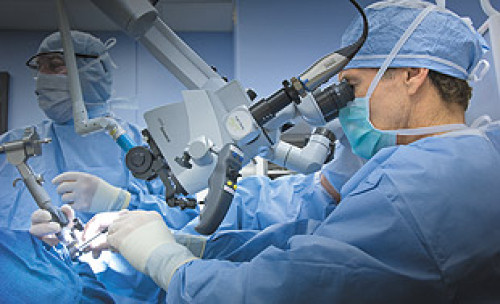Living with a Brain Tumor

Perhaps the most difficult conversation for a Neurosurgeon is the one when he lets his patient know he or she has a brain tumor. Over the years, I have delivered this news too many times, and yet, for our patients, each time it is a brand new event.
The diagnosis of a brain tumor is a life-altering event. Ultimately, the brain is who we are. It is the seat of our soul and the keeper of our thoughts. It is what makes us fully human. No computer compares. No computer will ever replace it.
When a patient hears the words “brain tumor” the natural tendency is to think the worst. And yet, there is hope and there are choices for patients who develop a brain tumor.
The diagnosis of a brain tumor is extremely complex as there are many different types, with each one carrying sometimes radically different treatment options and survival rates. Whereas some tumors are literally “death sentences,” others are imminently curable and once removed, the patient can have a normal life expectancy.
There are two basic types of brain tumors: those that arise from the brain itself (primary tumors) and those that spread to the brain from elsewhere (metastatic tumors). Primary brain tumors can be highly malignant, benign, or somewhere in between.
Location is extremely important in brain tumors. Although some tumors may indeed be benign (no cancer cells present), they can still be life threatening based on their size and potential to damage adjacent normal brain.
One of the most common tumors that we see is a meningioma. A meningioma is a primary brain tumor that arises from cells that form the covering of the brain or “meninges.” These tumors can cause neurologic deficits such as weakness, visual loss, stroke, and even death. And yet with surgery they can sometimes be cured.
Metastatic brain tumors or tumors that spread to the brain from a different part of the body (such as the lung or breast) are extremely common and represent the most common type of brain tumor that we treat at the Florence Neurosurgery and Spine Center.
Although the exact incidence of metastatic brain tumors in the United States is uncertain, it is estimated to be between 150,000 and 170,000 people per year. There are also approximately 70,000 new cases of primary brain tumors diagnosed each year. All together, the annual incidence of brain tumors in the United States (metastatic and primary combined) may be as high as 240,000 persons per year—more than lung cancer, breast cancer, prostate cancer, or colon cancer.
The management of brain tumors can be quite complex and often requires a team approach involving neurosurgeons, medical oncologists, radiation oncologists, neurologists, medical physicians, and nurses.
Fortunately, we have many tools available in the management of brain tumors. Through computer-assisted microsurgery we can remove many tumors while preserving normal brain function. Some tumors are not appropriate for open surgery and for these we sometimes treat with stereotactic radiosurgery—a procedure that precisely delivers high doses of radiation to a computer defined tumor target while sparing normal brain.
Over the last 20 years, a significant amount of information has been learned about the genetics of brain tumors. Already some brain tumors are being treated with targeted chemotherapy based on the specific genetic profile of the individual tumor. Although many advances have been made recently, even greater ones are sure to come during the next 20 years!
© Florence Neurosurgery and Spine Center